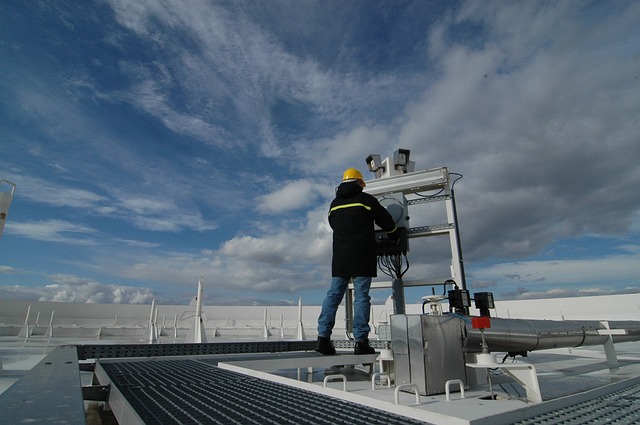
Having a correctly installed air conditioning unit in your house, not only provides your family a comfy, dry and cool atmosphere, but it also safeguards your furniture and house fittings. Humidity and heat can cause severe damage to wooden furniture, structural supports, and even your floor panels. In the long run not having an air conditioner or having it a poorly installed can be expensive.
Ensuring you have a properly installed air conditioner will guarantee your house efficient heat load at affordable costs. Due to the complex and intricate nature of installing it, it is advisable not to trust any regular person to install your AC unit, it might be cheap, but you are likely to incur hefty safety and maintenance costs
Proper HVAC installation is crucial since it will guarantee your AC unit maximum efficiency and also a longer lifespan. If you want to enjoy low energy bills and prevent unnecessary maintenance costs, this article will guide you on air conditioners and how to ensure your AC unit is installed correctly.
What to Expect during Installation Day?
To ensure proper installation of your air conditioning unit, there are steps every skilled HVAC technician must follow. These steps may vary, but you should expect a similar process to what we have listed below. It is also advisable to follow up and query your contractor for more clarification during the installation process.
Step 1: If there is an existing air conditioner the HVAC technician will take it apart or remove it.
Step 2: The HVAC technician will proceed to install new duct systems inside the house
Step 3: The HVAC technician will then prepare the outdoor installation site. This involves putting up a concrete foundation designed to support the air conditioner.
Step 4: After positioning your outdoor unit correctly, the technician will ensure it is securely installed.
Step 5: Both the indoor and outdoor units will be joined. The HVAC technician will ensure that the refrigerant pipes, drain piping, and electrical lines are correctly fixed.
Step 7: The central air conditioner will be connected to the thermostat.
Step 8: Before running the AC unit for the first time, the HVAC technician will vacuum the unit to ensure the refrigerant pipes are free from any contaminants, he/she will then proceed to add refrigerant in the air conditioner.
Step 9: After all the above steps are followed the AC unit is ready and is now operational.
Step 10: After confirming the air conditioner is operational, the HVAC technician will inspect the unit to ensure the installation was done appropriately and the system is functioning efficiently.
Important Air Conditioner parts and their Functions
Knowing some of the essential components of an air conditioning unit can be helpful when handling minor repairs and occasional maintenance. Knowing the various parts of your air conditioning system not only helps you understand how to repair and maintain your AC but also helps while dealing with your local HVAC technician
The Compressor
The compressor is the most crucial component of the AC and plays a huge role in the overall cooling process. Its function is to convert refrigerant gas into a liquid state to assist in the cooing process.
The Condenser
The condenser is the 2nd most important component in your AC unit. The work of the air condenser is to condense evaporated refrigerant into a liquid state facilitating heat transfer.
The Evaporator
The evaporator is vital during the last step of the cooling process. The work of the evaporator is to release pressure from the liquid refrigerant allowing its conversion into gas.
Expansion Valve
The expansion valve controls the amount of liquid refrigerant entering the evaporator.
Filters
Air conditioners usually have inbuilt filters to filter out unnoticeable dust particles in the air. Filters ensure that your family breaths in pure and clean air.
The Thermostat
The thermostat is a remote-controlled device used to control the air conditioner. It can program the AC to set the exact temperature you prefer and it also shows the level of air temperature of your room.
The Muffler
The compressor usually produces very annoying sounds, and it is the muffler’s job to control and quieten this sound.
How to know that your AC unit has been installed incorrectly
Weird Noises: Hearing awkward and strange noises from your AC after installation, is a strong indicator of poor installation
Slow Response: If your AC responds slowly after setting the thermostat, it is highly likely that the HVAC technician used too much or too little refrigerant into your unit.
Uneven Airflow: If you experience uneven heating or cooling in different parts of the house, it means that there are holes and cracks in your duct.
Maintaining Your Air Conditioning Unit
Observing proper maintenance is important, especially if you want your AC unit to have a longer lifespan. However, it is important not to try any repairing work on your own; it is advisable to leave technical and mechanical issues in the hands of a professional.
Conclusion
Installing a new central air conditioning system must be done by a licensed professional HVAC technician. It can be extremely dangerous and risky installing a new AC unit without proper training and knowledge. Buying a new air conditioner is a substantial investment, and improper installation could cause significant damages to the device, it also leads to poor efficiency and increased costs. Therefore, it is better to seek the professional services; this will guarantee you valuable guidance concerning AC installation and maintenance.























